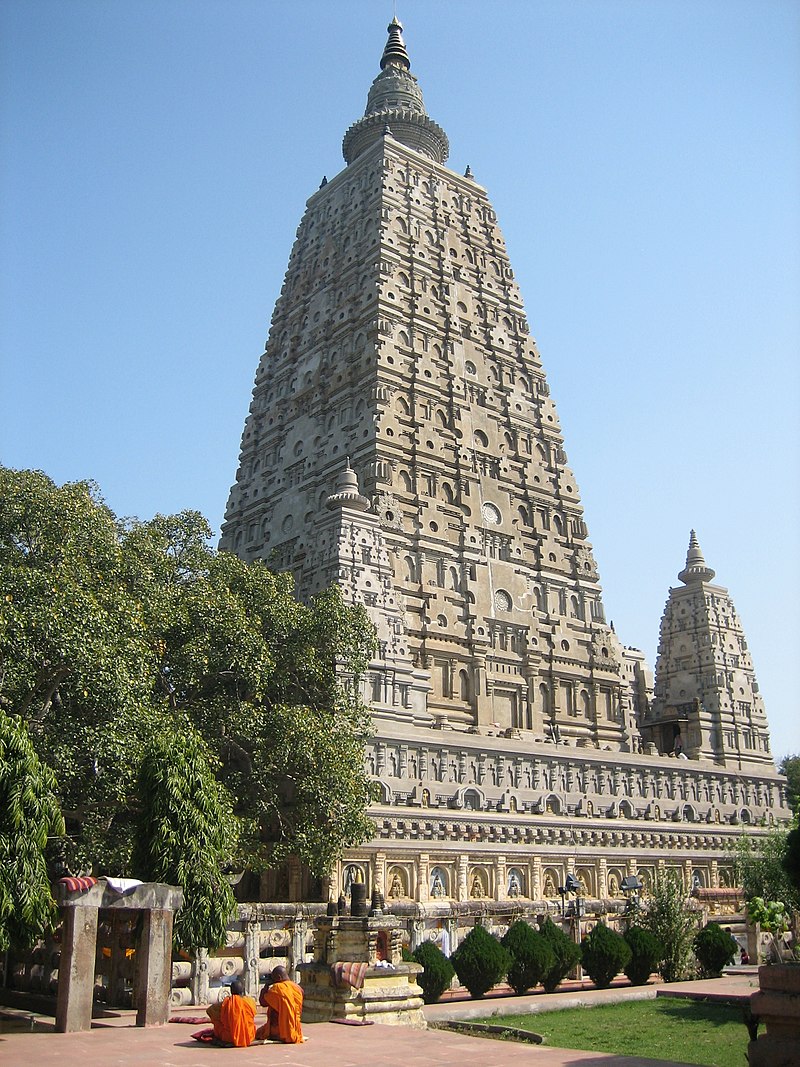ॐ श्री गुरुभ्यो नमः ॐ श्री शिवानन्दाय नमः ॐ श्री चिदानन्दाय नमः
Source of all Images in this Blog-post : Google Images : ‘Google Image Search’ will reveal the multiple sources of every single image shared in this Blog. For more details, kindly see ‘Disclaimer‘
Explore MahaBodhi Temple of Bodh Gaya on TripAdvisor with Visitor Reviews
Official Website of MahaBodhi Temple, Bodh Gaya
Bodh Gaya is a religious place of the Buddhists. It is a place of pilgrimage associated with the Mahabodhi Temple in Gaya district of Bihar in India.It is famous for being the place where Gautama Buddha is said to have obtained Enlightenment. The name Bodh Gaya, did not come into use until the 18th century CE.
Historically, it was known as Uruvela, Sambodhi, Vajrasana or Mahabodhi. The main monastery of Bodh Gaya used to be called the Bodhimanda-vihāra. Now it is called the Mahabodhi Temple.
For Buddhists, Bodh Gaya is the most important and most sacred of the main four pilgrim places associated with the life of Gautama Buddha, the other three being Kushinagar, Lumbini, and Sarnath.
In 2002, Mahabodhi Temple, located in Bodh Gaya, became a UNESCO World Heritage Site.
The Buddha
Traditional accounts say that, around 589 BCE, Siddhartha Gautama, a young prince who saw the suffering of the world and wanted to end it, reached the forested banks of the Phalgu river, near the city of Gaya, India.
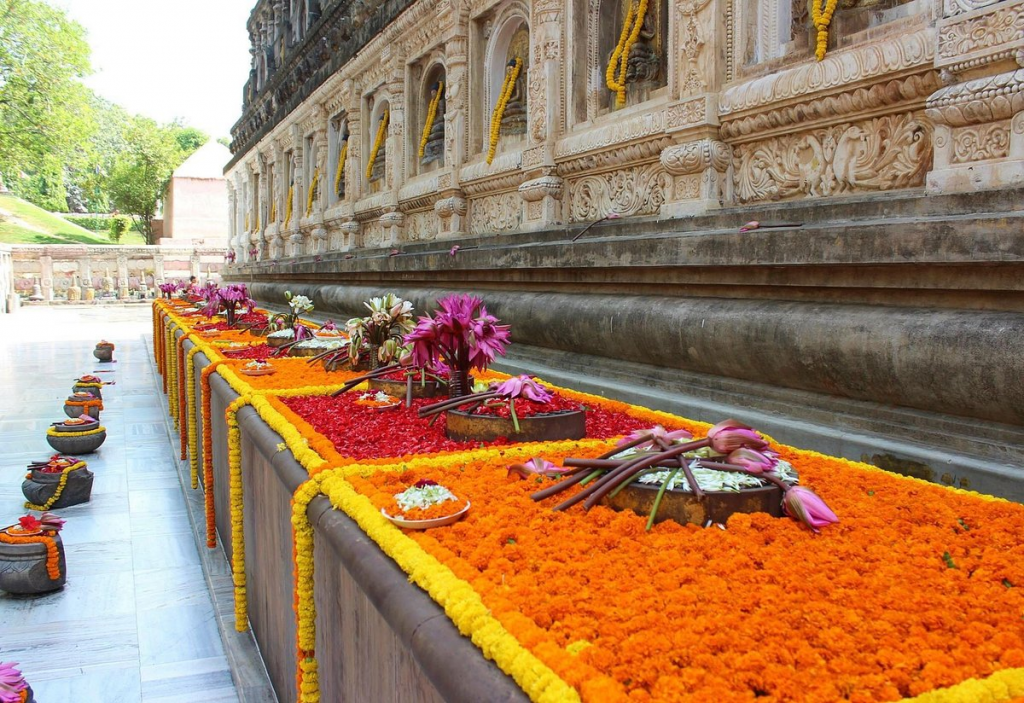
There he sat in meditation under a Peepul tree which later became known as the Bodhi tree.
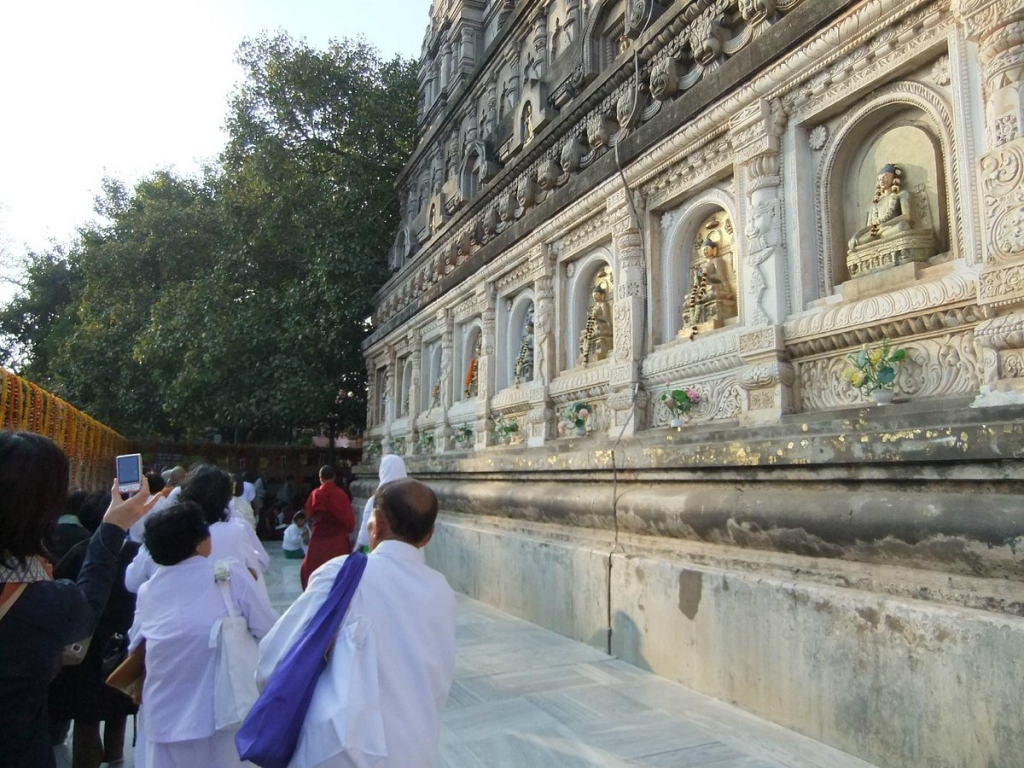
According to Buddhist scriptures, after three days and three nights, Siddharta attained enlightenment and found the answers that he had sought. In that location, Mahabodhi Temple was built by Emperor Ashoka around 260 BCE.

Buddha then spent the succeeding seven weeks at seven different spots in the vicinity meditating and considering his experience. Several specific places at the current Mahabodhi Temple relate to the traditions surrounding these seven weeks :
- The first week was spent under the Bodhi tree.
- During the second week, the Buddha remained standing and stared, uninterrupted, at the Bodhi tree. This spot is marked by the Animeshlocha Stupa, that is, the unblinking stupa or shrine, to the north-east of the Mahabodhi Temple complex. There stands a statue of Buddha with his eyes fixed towards the Bodhi tree.
- The Buddha is said to have walked back and forth between the location of the Animeshlocha Stupa and the Bodhi tree. According to legend, lotus flowers sprung up along this route; it is now called Ratnachakrama or the jewel walk.
- He spent the fourth week near Ratnagar Chaitya, to the north-east side.
- He spent the sixth week next to the Lotus pond.
- He spent the seventh week under the Rajyatna tree.
Mahabodhi Tree
The Bodhi tree at Bodhgaya is directly connected to the life of the historical Buddha, Siddhartha Gautama, who attained enlightenment or perfect insight when he was meditating under it. The temple was built directly to the east of the Bodhi tree, supposedly a direct descendant of the original Bodhi Tree.

According to Buddhist mythology, if no Bodhi tree grows at the site, the ground around the Bodhi tree is devoid of all plants for a distance of one royal karīsa. Through the ground around the Bodhi tree no being, not even an elephant, can travel.

According to the Jatakas, the navel of the earth lies at this spot, and no other place can support the weight of the Buddha’s attainment.

Another Buddhist tradition claims that when the world is destroyed at the end of a kalpa, the Bodhimanda is the last spot to disappear, and will be the first to appear when the world emerges into existence again.

Tradition also claims that a lotus will bloom there, and if a Buddha is born during the new kalpa, the lotus flowers in accordance with the number of Buddhas expected to arise.

According to legend, in the case of Gautama Buddha, a Bodhi tree sprang up on the day he was born.
Temple Construction
In approximately 250 BCE, about 200 years after the Buddha attained Enlightenment, Emperor Ashoka of the Mauryan Empire visited Bodh Gaya in order to establish a monastery and shrine on the holy site, which have today disappeared.
There remains however the Diamond throne, which he had established at the foot of the Bodhi tree. The Diamond throne, or Vajrasana, is thought to have been built by Emperor Ashoka of the Maurya Empire between 250 and 233 BCE,. at the location where Buddha reached enlightenment. It is worshiped today, and is the center of many festivities at the temple.
Official Website of MahaBodhi Temple, Bodh Gaya
Current Pyramidical Temple
While Asoka is considered the Mahabodhi temple’s founder, the current pyramidal structure dates from the Gupta Empire, in the 5th–6th century CE. It’s identical to the architectural styles of Hindu temples still being constructed in India.
However this may represent a restoration of earlier work of the 2nd or 3rd century.
Architectural Style
Mahabodhi Temple is constructed of brick and is one of the oldest brick structures to have survived in eastern India. It is considered to be a fine example of Indian brickwork, and was highly influential in the development of later architectural traditions.
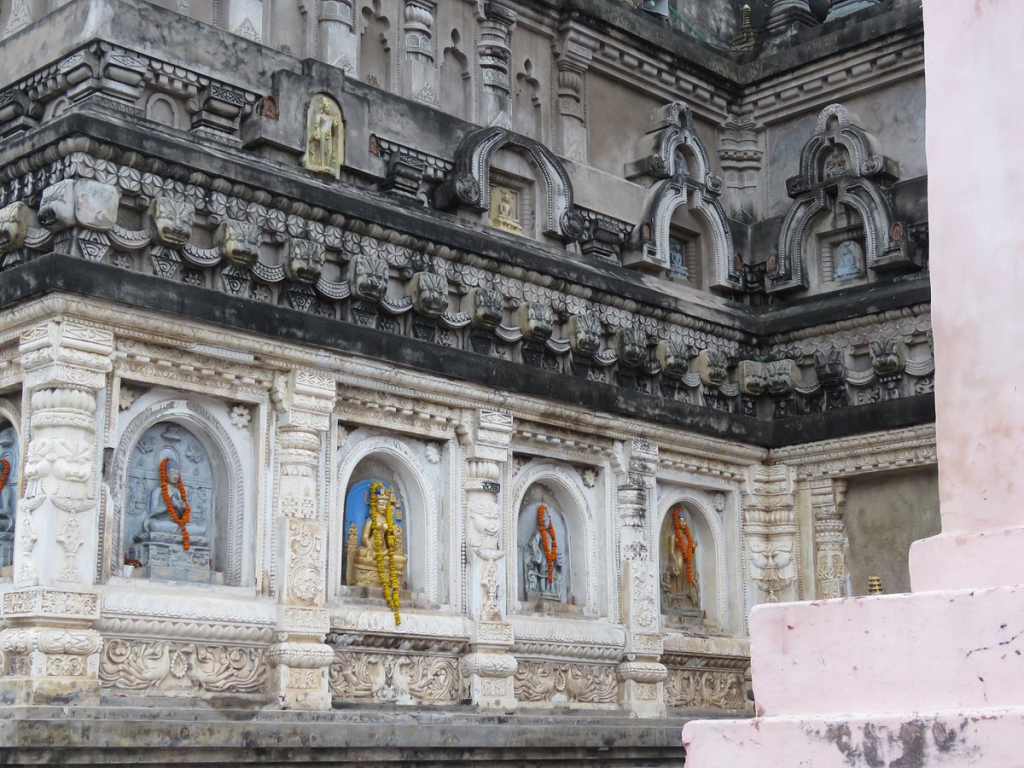
Mahabodhi Temple’s central tower rises 55 metres (180 ft), and were heavily renovated in the 19th century. The central tower is surrounded by four smaller towers, constructed in the same style.
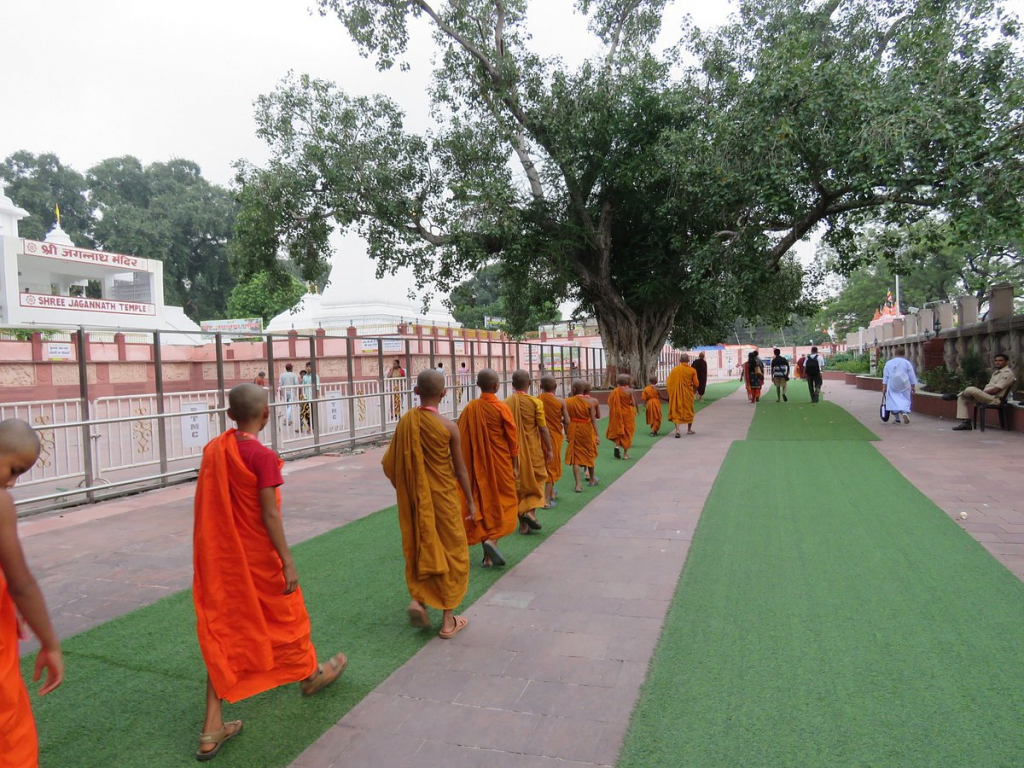
The Temple is surrounded on all four sides by stone railings, about two metres high. The railings reveal two distinct types, both in style as well as the materials used.

The older ones, made of sandstone, date to about 150 BCE, and the others, constructed from unpolished coarse granite, are believed to be of the Gupta period.
The older railings have scenes such as Lakshmi, the Hindu/Buddhist goddess of wealth, being bathed by elephants; and Surya, the Hindu sun god, riding a chariot drawn by four horses.

The newer railings have figures of Stupas (reliquary shrines) and Garudas (eagles). Images of lotus flowers also appear commonly.
Images of the site include Avalokiteśvara (Padmapani, Khasarpana), Vajrapani, Tara, Marichi, Yamantaka, Jambhala and Vajravārāhī.
